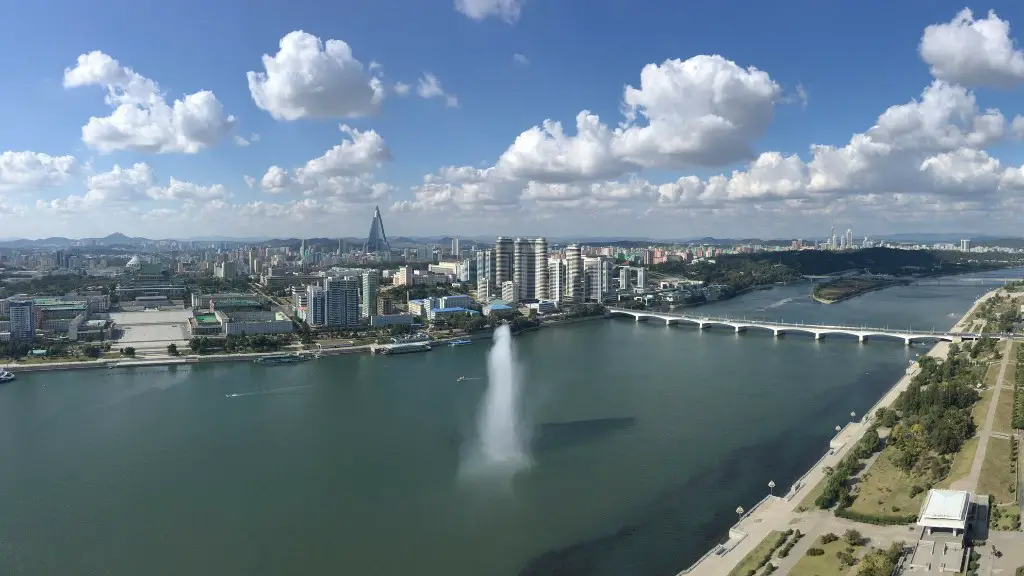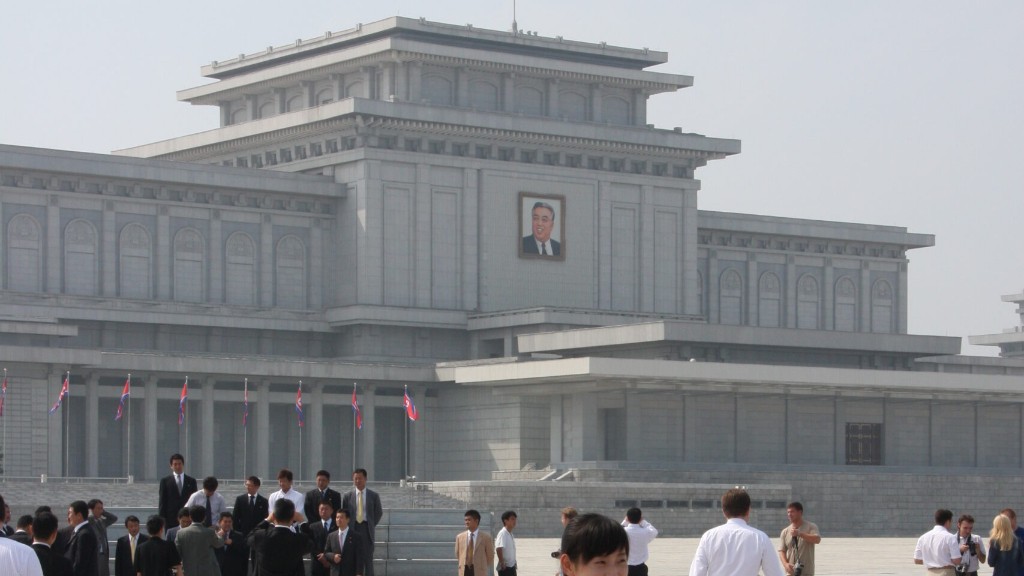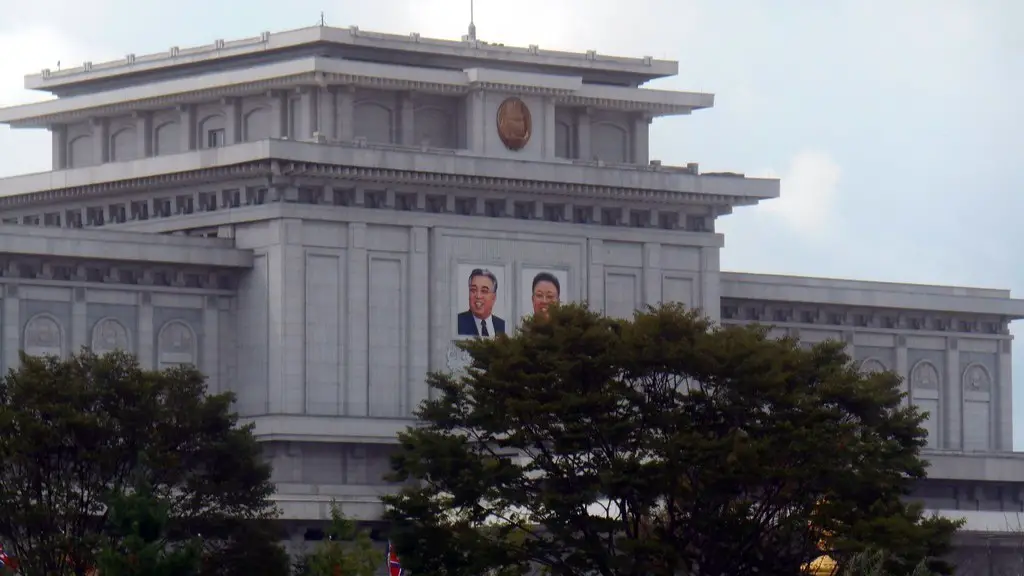In 1948, after the end of World War II, the Soviet Union and the United States occupied the northern and southern halves of the Korean peninsula, respectively. The two superpowers then imposed their own political systems on their respective halves of the peninsula. North Korea, with support from the Soviet Union, established a communist government, while South Korea, with support from the United States, established a capitalist government. This division of the Korean peninsula led to decades of conflict and tension between the two sides.
The economic, social, and political differences between South and North Korea began to take shape in the early 20th century, when the Korean peninsula was under Japanese colonial rule. After World War II ended in 1945, the peninsula was divided into two occupation zones, with the Soviet Union controlling the north and the United States the south. This eventually led to the establishment of two separate governments in 1948, each claiming to represent the entire Korean peninsula. The North Korean government, led by Kim Il-sung, styled itself as a communist state, while the South Korean government, led by Syngman Rhee, maintained a more capitalist economy.
The two governments clashed over ideology and economic planning, leading to intermittent border skirmishes and, eventually, full-scale war. The Korean War began in 1950 when North Korean forces invaded the South, and ended three years later in a stalemate. Since then, the two sides have remained technically at war, though the conflict has largely been confined to a military standoff.
What is the issue between North and South Korea?
The conflict between North and South Korea is largely due to the different ideologies of the two governments. The North Korean government follows a policy of socialism, while the South Korean government is more capitalist. This difference in ideologies has led to a split in the Korean peninsula, with the North and South each claiming to be the only legitimate government. This ongoing conflict has resulted in a state of war between the two countries.
US policy toward Korea during World War II was aimed at preventing any single power’s domination of the Korean Peninsula. This policy led to the division of Korea into North and South at the 38th parallel. The division was intended to stop the Soviet advance into South Korea and to maintain a balance of power on the Peninsula.
Can South Koreans go to North Korea
If you are planning to travel to North or South Korea, it is important to be aware that it is not possible to enter either country from the other. Even if you meet all entry requirements, you may be arbitrarily arrested and/or detained at your point of entry. This is a serious risk that should be considered before making any travel plans.
The Korean peninsula has been a source of conflict for many years, with both North and South Korea claiming ownership of the entire region. Both countries joined the United Nations in 1991, and are recognized by most member states. In the 1970s, both nations began holding informal diplomatic dialogues in order to ease military tensions. However, the situation on the peninsula remains volatile, and any future conflict could have devastating consequences.
How did Korea split?
The Korean War began on June 25, 1950, when the Northern Korean People’s Army invaded South Korea in a coordinated general attack at several strategic points along the 38th parallel, the line dividing communist North Korea from the non-communist Republic. The war lasted three years and ended with the signing of the armistice agreement on July 27, 1953.
No peace treaty was ever signed, and the two Koreas are technically still at war, engaged in a frozen conflict. In April 2018, the leaders of North and South Korea met at the DMZ and agreed to work toward a treaty to end the Korean War formally. However, no significant progress has been made since then.
Why did Japan take over Korea?
However, Japan’s modernization and Westernization efforts helped it to become a more powerful country, and by the late 1800s, it had become a leading imperialist power in East Asia. Japan’s invasion and colonization of Korea was part of its larger imperialist goals, and it was also motivated by a desire to secure Korea’s resources and to create a strategic buffer zone between Japan and China.
The Communist movement in Korea emerged as a political movement in the early 20th century. Although the movement had a minor role in pre-war politics, the division between the communist North Korea and the anti-communist South Korea came to dominate Korean political life in the post-World War II era.
Are Americans allowed in North Korea
Hey,
I just wanted to let you know that Americans are not currently allowed to go to North Korea. The restrictions in place make it difficult for Americans to engage in direct exchange activities with DPRK citizens, have direct contact with North Korean individuals within the DPRK, and travel by train between Sinuiju and Pyongyang. I hope that this changes in the future so that Americans can experience North Korea for themselves!
North Korea is a country that is largely cut off from the rest of the world. It is known for its secretive nature and its lack of transparency. In recent years, North Korea has become increasingly isolated, and this has led to a decline in its standard of living. North Korea has suffered from a lack of fuel and electricity, and this has had a ripple effect on other aspects of life in the country. North Korea is a country that is in need of help, and the international community should do what it can to assist the North Korean people.
Can Americans go to Korea?
As of September 1st 2021, US citizens travelling to Korea must have a valid visa or an approved Korea Electronic Travel Authorization (K-ETA) in order to enter the country. This is a new requirement that was not previously in place.
China and North Korea have had a close, special relationship for many years now. China is often considered to be North Korea’s closest ally, and the two countries have a mutual aid and co-operation treaty in place. This is currently the only defense treaty either country has with any nation.
Who is stronger South Korea or North Korea
North Korea has an advantage over South Korea in the number of ground troops and equipment. Their ground forces are highly motorized and very mobile. Additionally, their guns generally have longer range and are more powerful than those of South Korea.
The United States and South Korea have enjoyed a strong alliance since the 1953 Mutual Defense Treaty. Under the agreement, United States military personnel have maintained a continuous presence on the Korean peninsula. This has been a key factor in deterring North Korean aggression and ensuring the safety of South Korea. In recent years, the two nations have also worked together to promote peace and stability in the region through initiatives such as the six-party talks.
Which part of Korea did the US support?
The US supported the Republic of Korea (commonly called South Korea), in repelling an invasion from the Democratic People’s Republic of Korea (commonly called North Korea) The Korean War was a conflict that emerged after World War II The Empire of Japan had occupied the Korean Peninsula during the war. After World War II, the Soviet Union annexed North Korea, while the US annexed South Korea. This led to the split of the peninsula, and the two new governments became hostile towards each other. In 1950, North Korea invaded South Korea in an attempt to reunify the peninsula, but the US intervened and helped South Korea to repel the invasion.
Japan lost all power over Korea after WWII, when the US and the Soviets divided it along the 38th parallel. Korea was split into North and South Korea when Japan was forced to surrender all of their colonies to the Soviets and the United States after losing WWII.
Final Words
The Korean War began in 1950 when North Korea invaded South Korea in an attempt to reunify the peninsula under Communist rule. The United States intervened on behalf of South Korea, and the United Nations sent troops to assist. After three years of fighting, the war ended in a stalemate, with an armistice between North and South Korea.
The two Koreas have beenlocked in a tense standoff for years, with neither side willing to back down. Recently, however, relations between the two countries have begun to thaw, and they have even begun to cooperate on some issues. It is still too early to tell whether this detente will last, but it is certainly a step in the right direction.





